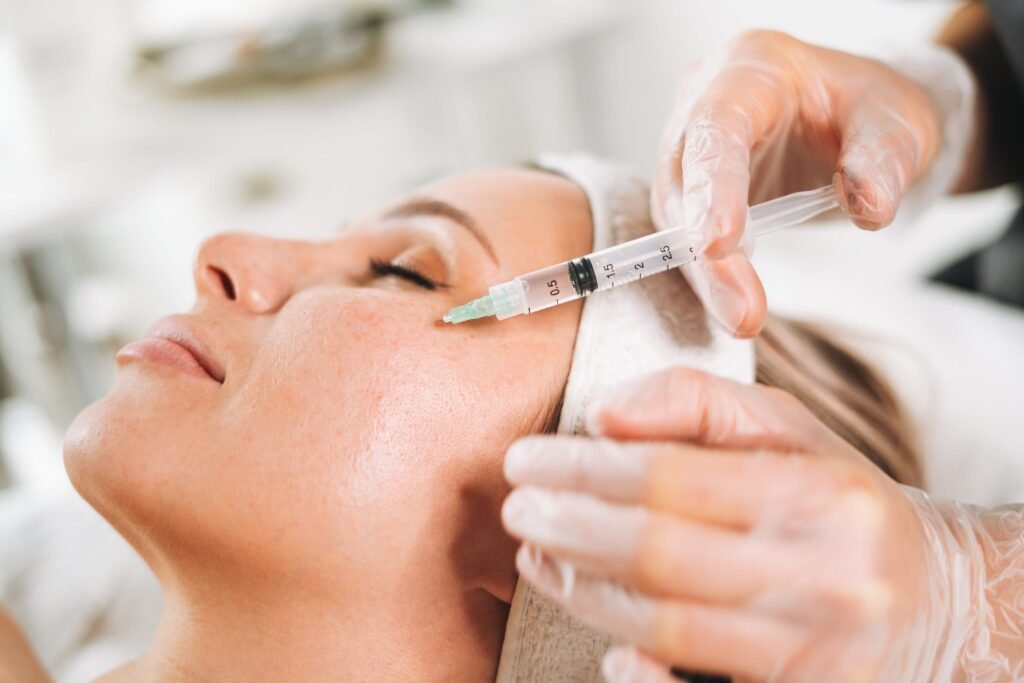The Growing Demand for Safe Aesthetic Procedures: What Patients Need to Know
In recent years, the field of aesthetic medicine has witnessed an explosion in popularity, especially with treatments like botulinum toxin injections and dermal fillers. However, with millions of Americans opting for these minimally invasive procedures, a pressing question arises: Who is performing these injections, and are they qualified to do so safely?
The Need for Standardized Training in Aesthetic Medicine
Aesthetic medicine operates in a landscape devoid of consistent training and regulation. Unlike other medical specialties, such as dermatology and plastic surgery, which require formal residency and board certifications, aesthetic procedures lack a structured training framework. Instead, education varies significantly, from extensive anatomy training to weekend workshops that provide minimal real-world preparation.
Key Concerns in Injector Training:
- Inconsistent Qualifications: Training is often left to a mix of private programs, pharmaceutical companies, and unregulated influencers.
- Variable Instruction Quality: Some injectors receive comprehensive anatomy education, while others may undertake programs lacking hands-on experience.
Dr. Sebastian Cotofana, a trauma surgeon and anatomy expert, highlights a glaring issue: “Everybody thinks they can educate because there is no regulation. There’s no board, no federal or state standards defining who should be teaching or what qualifications are needed.”
Unprecedented Growth in Aesthetic Procedures
The demand for aesthetic procedures has surged dramatically, with the International Society of Aesthetic Plastic Surgery reporting over 18.8 million nonsurgical procedures performed worldwide in 2022—a staggering 57.8% increase over the past four years. In the U.S. alone, soft tissue filler and neuromodulator injections exceeded 4.5 million in 2022, marking respective year-over-year increases of 13% and 24%.
Popular Procedures Driving Demand:
- Facial contouring
- Lip augmentation
- Nonsurgical rhinoplasty
While patients are drawn to these minimally invasive options, this rising demand poses risks for potential complications.
High-Risk Areas and Novice Injectors: A Dangerous Combination
One alarming trend is the tendency for inexperienced injectors to tackle complex facial areas without adequate training. Dr. Cotofana emphasizes, “Achieving competency in managing complex areas requires years of supervised experience.”
Common Complications Include:
- Tissue necrosis
- Blindness
Inexperienced injectors are often ill-prepared to handle these high-risk situations, leading to significant patient injuries and legal consequences for practitioners.
Fragmented Training Systems Influence Injector Competency
A recent survey revealed that only 36% of dermatology residents felt adequately trained to provide cosmetic services post-graduation. Even more striking, 25% of third-year residents had never performed a filler injection.
On the non-physician side, nurse practitioners and physician assistants lack dermatology-specific certification requirements, often relying on basic training offered by product manufacturers, which doesn’t prepare them for off-label applications or high-risk scenarios.
Med Spas: Bridging Access but Contributing to Inconsistencies
The emergence of medical spas (med spas) has democratized access to aesthetic procedures, yet these establishments often exacerbate the training issue. According to the American Med Spa Association, the number of med spas in the U.S. surged to over 10,400 in 2023, a considerable increase from just over 8,800 in 2022.
Issues Related to Med Spas:
- Nonphysician injectors with variable training levels.
- Higher rates of adverse events linked to inexperienced practitioners.
As Alex Thiersch, founder of AmSpa, notes, patients might mistakenly perceive procedures at med spas as simpler than those performed in a physician’s office, neglecting to inquire about the injector’s qualifications.
Emerging Trends: The Shift in Patient Preferences
Interestingly, patients are starting to shift towards more natural outcomes, a phenomenon known as filler fatigue. This change in preference has resulted in a rising demand for subtler enhancements, such as the lip flip. Despite the continued popularity of fillers, the enthusiasm may be waning; a recent report noted only an 8% increase in filler procedures in 2023 compared to 70% previously.
Implications for Injectors:
- Increased focus on natural results drives the necessity for enhanced training.
- Injection techniques must adapt to meet rising patient expectations.
Pursuing Competency: A Structured Path Forward
To address the training gap, industry experts advocate for structured educational pathways that blend theoretical knowledge with practical experience. Dr. Cotofana proposes a 3-tier training model to facilitate progress from novice to expert injectors.
Training Phases:
- Beginner Level: Focus on low-risk areas under supervision.
- Moderate Complexity: Move to areas like the lips and chin.
- Expert Level: Safe injections in high-risk regions after at least 6 years of training and experience.
Internationally, countries such as the Netherlands have established aesthetic medicine as a recognized specialty with comprehensive training protocols, indicating a promising shift towards improved education.
The Importance of Advanced Training Tools
The use of advanced training modalities, including cadaver anatomy courses and simulation training, can significantly enhance safety in aesthetic procedures. Notably, ultrasound-guided injections have been identified as a critical method for avoiding complications by visualizing blood vessels in real-time, yet widespread adoption in the U.S. remains limited.
Collaboration: Essential for Safety and Enhancement
Thiersch emphasizes the importance of collaborative efforts among all stakeholders to establish industry-wide training standards:
“We have an incredible opportunity right now to unify the industry," he insists. "If we don’t set these standards ourselves, lawmakers might step in, potentially imposing regulations we may not support.”
In Summary:
- The aesthetic medicine landscape is evolving rapidly, necessitating improved training and safety protocols.
- Both medical and non-medical practitioners must prioritize education to ensure patient safety and enhance procedural outcomes.
- Collaboration among professionals in the field will pave the way for standardized training that benefits both practitioners and their clients.
For more comprehensive insights into aesthetic medicine practices, consider visiting International Society of Aesthetic Plastic Surgery and American Med Spa Association.


